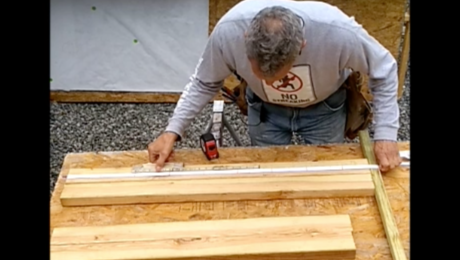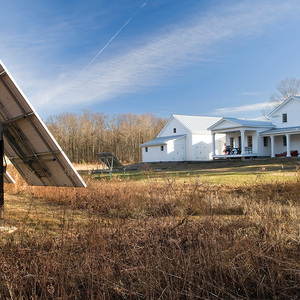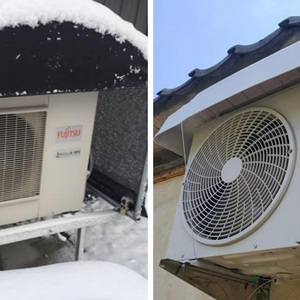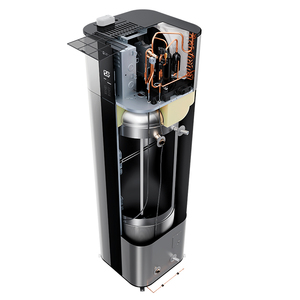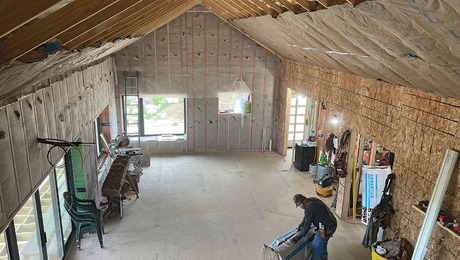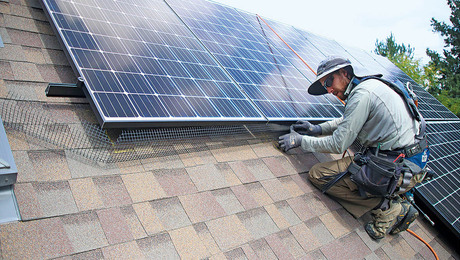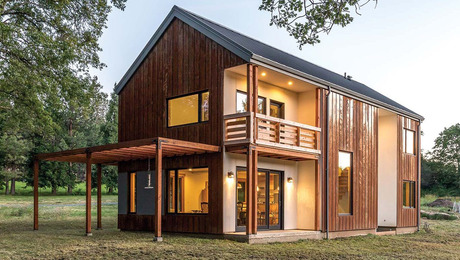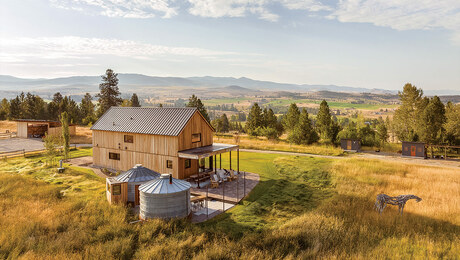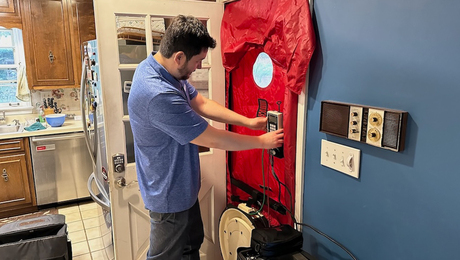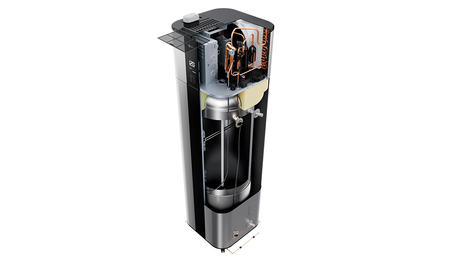Energy Efficiency is Easier Than Ever
Over the last 25 years, some mechanical equipment and systems have improved.

I’ve been writing about residential energy-efficiency measures for more than 25 years, ever since I was hired as an assistant editor at the Journal of Light Construction in 1999. Recently I wondered, “What’s changed during those 25 years?” The answer, as it turns out, is “a lot.” My conclusion contradicts a recurrent theme in newspaper stories on U.S. residential construction—namely, that our industry is stuck in the mud, still building houses the old-fashioned way.
The authors of these articles often point out, accurately, that most U.S. homes aren’t delivered by truck from a factory; instead, they’re mostly site-built out of framing lumber, much as they were in 1960. But if you are one of a subset of builders or homeowners who cares about energy efficiency and environmental responsibility, you’ll find that the specifications for a home in 2024 are much different than they were in 1999.
Some specifications for energy-efficient construction haven’t changed much. For example, back in 1999, many New England builders were building extra-thick walls to accommodate more insulation; installing a thick layer of cellulose insulation on attic floors; choosing among various brands of triple-glazed windows; getting ready for a blower-door test by performing air-sealing work; and specifying the installation of a heat-recovery ventilator. For energy-conscious builders in cold climates, these details remain common today. However, the following residential features that are now quite common didn’t exist (for the most part) back in 1999.
1.) Home EV Chargers
In many areas of the U.S., builders are becoming accustomed to installing a 240v circuit in the garage for an electric vehicle charger. Back in 1999, electric cars were still quite rare—and if you ever saw an electric car, there was a good chance it was hand-built by a tinkerer.
2.) LED Fixtures and Bulbs
If you cared about energy efficiency back in 1999, you probably installed compact fluorescent lamps (CFLs) in most of your fixtures. CFLs were a mixed blessing: They were efficient and affordable, but they contained poisonous mercury, so broken bulbs had to be disposed of carefully.
In the late 1980s, researching lighting options for my off-grid home, I looked into some of the earliest available LED lamps. I ended up buying a funky, handmade 12v light fixture assembled from an array of orange LEDs. Back then, LEDs able to produce white light were not yet available. (I still have this antique LED fixture; I use it as a night-light.)
When LED lamps that produced white light finally became available in the late 1990s, they were quite expensive, of course. Now they are ubiquitous and cheap. Compared to CFLs, LED lamps are better in every way. They produce more lumens per watt, they are less fragile, and they last longer than CFLs.
3.) Large Photovoltaic Arrays
According to a website called Our World in Data, the average price of a PV panel, in constant 2021 dollars, has dropped from $6.29 per watt in 1999 to $0.26 per watt in 2023. In other words, the cost dropped by a factor of 24. (Of course, then as now, the cost of PV modules makes up only a small percentage of the cost of an installed residential system PV system—12%, on average, according to the Energy Sage website.)
Back in 1999, the only people who had residential PV systems were very wealthy experimenters and off-grid hippies who used almost no electricity (and therefore needed only one or two PV modules). Times have changed. These days, a homeowner who borrows money to install a rooftop PV system will probably save more money each month in lower electricity bills than the monthly loan payment for the PV system.
4.) Residential Induction Ranges
In 1999, residential induction ranges were expensive and rare. These days, the percentage of new home buyers who choose an induction range is still small—but that percentage is growing. Purchasers can now choose from a much greater selection of these appliances than they could back in 1999, and these cooktops are more affordable than they used to be.
5.) Heat-Pump Water Heaters
In the late 1990s and early 2000s, energy nerds kept hoping that appliance manufacturers would begin selling dependable heat-pump water heaters. Development of these appliances was slow. In 2004, I wrote an article for Energy Design Update called “Heat-Pump Water Heaters Still Undependable.” The article discussed a prototype heat-pump water heater called the WatterSaver, which was developed with funding provided by the U.S. Department of Energy and the New York State Energy Research & Development Authority (NYSERDA).
The water heaters were field-tested in 18 California homes. But as I reported, the units were “plagued by durability problems,” and the testing report showed an unacceptable rate of equipment failure. Eventually, of course, appliance manufacturers managed to design and manufacture dependable heat-pump water heaters. But the first such units weren’t sold in the U.S. until September 2009, when Rheem Manufacturing Company (followed in short order by General Electric) started selling heat-pump water heaters.
6.) Cold-Climate Air-Source Heat Pumps
If you’re a frequent GBA or FHB reader, you probably know that the best way to heat and cool an energy-efficient house is with a ductless or ducted minisplit—that is, a variable-capacity air-source heat pump that uses inverter technology. While heat pumps have been commonly used in warmer areas of the U.S. for many decades, these American heat pumps didn’t work well when outdoor temperatures dropped below 25°F; to provide heat in cold weather, they required electric-resistance elements (or, in some cases, a backup gas-powered furnace).
In the first decade of this century, a few American manufacturers struggled to develop a cold-climate heat pump that would work in northern New England. The most well-known attempt came from a Maine company called the Nyle Corporation. In October 2001, Energy Design Update reported that Nyle was “building a new type of air-to-air heat pump that’s optimized for heating and will deliver the same amount of heat energy at 0°F ambient as today’s heat pumps deliver at 60°F.”
Unfortunately, Nyle never made any money, and the company stopped selling heat pumps in 2005. A year later, they tried to revive production, but neither Nyle nor a Maine competitor named Hallowell International were able to sell enough cold-climate heat pumps to keep either company afloat.
As early as April 2000, Energy Design Update reported that Japanese manufacturers, including Mitsubishi and Fujitsu, were trying to develop a market for ductless minisplits in the U.S. The article noted, “With the introduction of a new line of high-efficiency condensing units priced up to 25% less than current units, Mitsubishi hopes to light a fire under a somnolent U.S. market.”
Although these air-source heat pumps were more efficient than U.S. heat pumps, they were not yet optimized for very cold climates. The turning point came in about 2007, when cold-climate heat pumps manufactured by Mitsubishi and Fujitsu began to attract attention in the U.S. In February 2008, Energy Design Update reported on a tax credit program in Oregon that offered incentives on some models of ductless minisplit heat pumps; to qualify, the heat pumps “must provide at least 50% of rated capacity efficient operation when outside air is 17°F.” The article listed five manufacturers that met the program specifications: Daikin, Fujitsu, Friederich, Mitsubishi, and Sanyo.
Later that year, the November 2008 issue of Solar Today published a report about one of builder Carter Scott’s low-energy-use homes in Massachusetts. The home has a Mitsubishi split-ductless air-source heat pump that provides efficient heating and air conditioning for the whole home.
At this point, the era of the cold-climate heat pump had finally arrived in the U.S., though it took several more years for cold-climate builders to believe the reports of early adopters of minisplit heat pumps. Eventually, the transition from fossil-fuel systems to heat-pump systems became national policy, as reflected in current IRS rules on tax credits for residential heat pumps.
Putting It All Together
Never before in human history has it been easier to design and build an all-electric home that generates as much electricity on-site as it uses on an annual basis. The technical developments that made this possible, many of which occurred in the last 25 years, have been amazing.
It’s hard to imagine comparable changes that might occur in the next 25 years. That said, my crystal ball is famously cloudy. Even though I can’t see any huge technical improvements on the horizon, I know they’re coming. Let’s hope that human beings can adequately adapt to global climate change, so that most of us live to see these unimagined technical improvements bear fruit.
— Martin Holladay is a retired editor who lives in Vermont.
From Fine Homebuilding #324
RELATED STORIES

